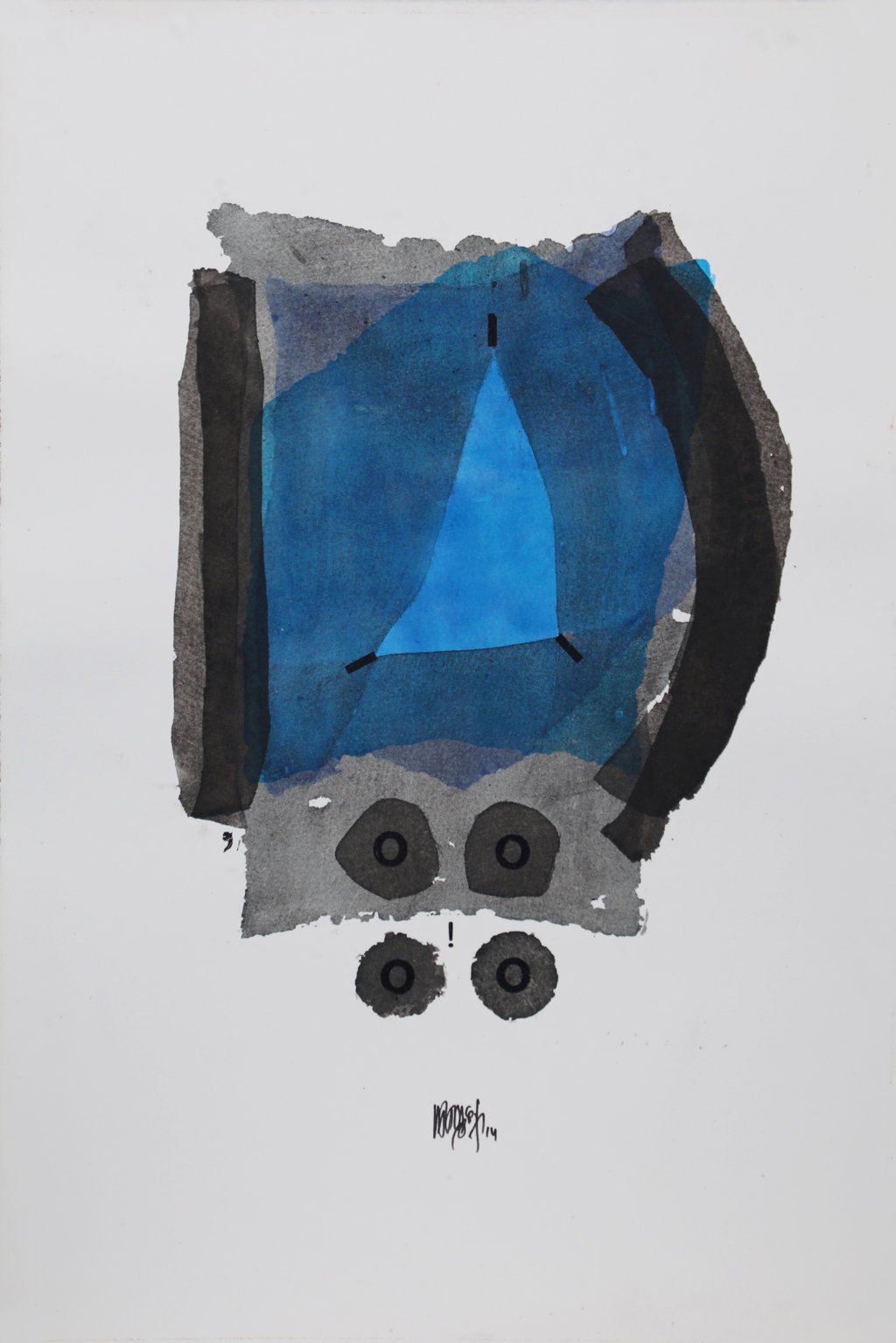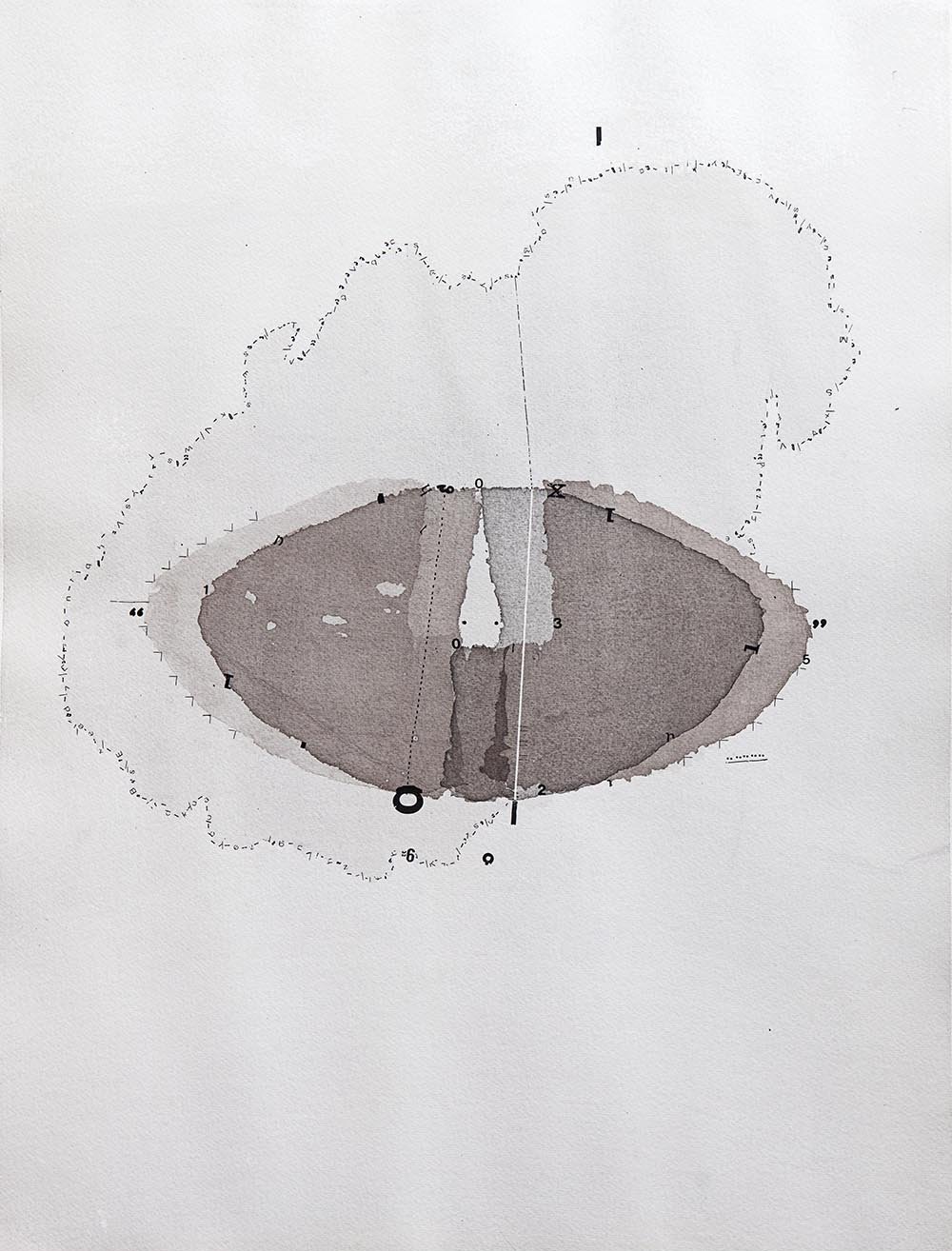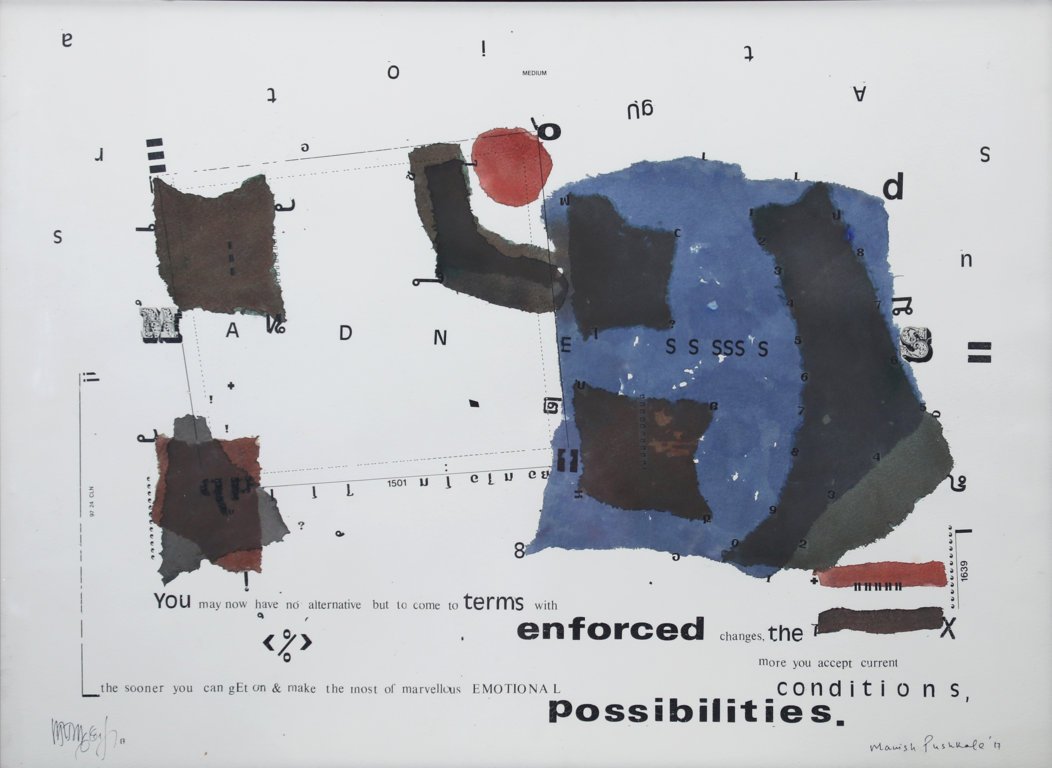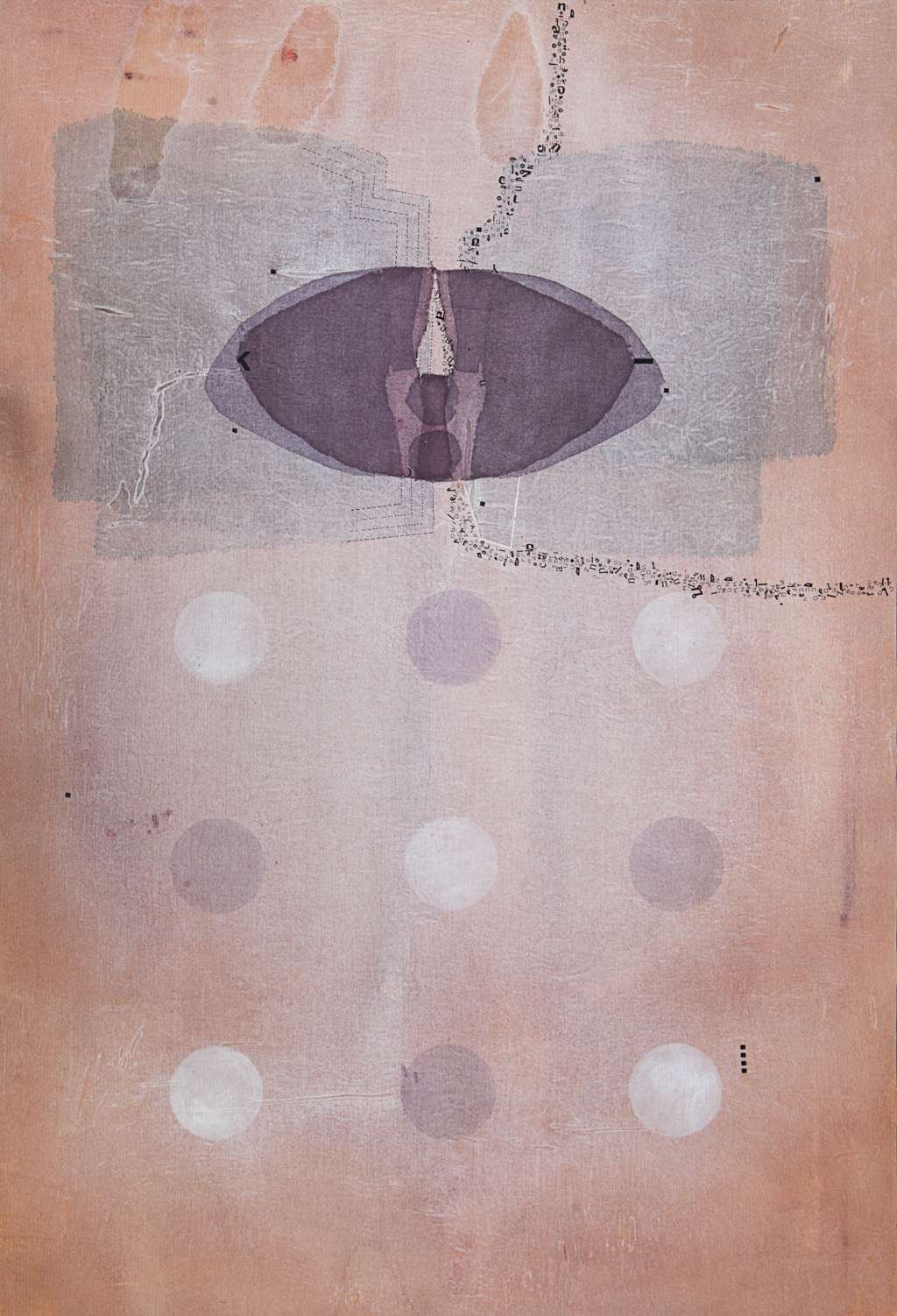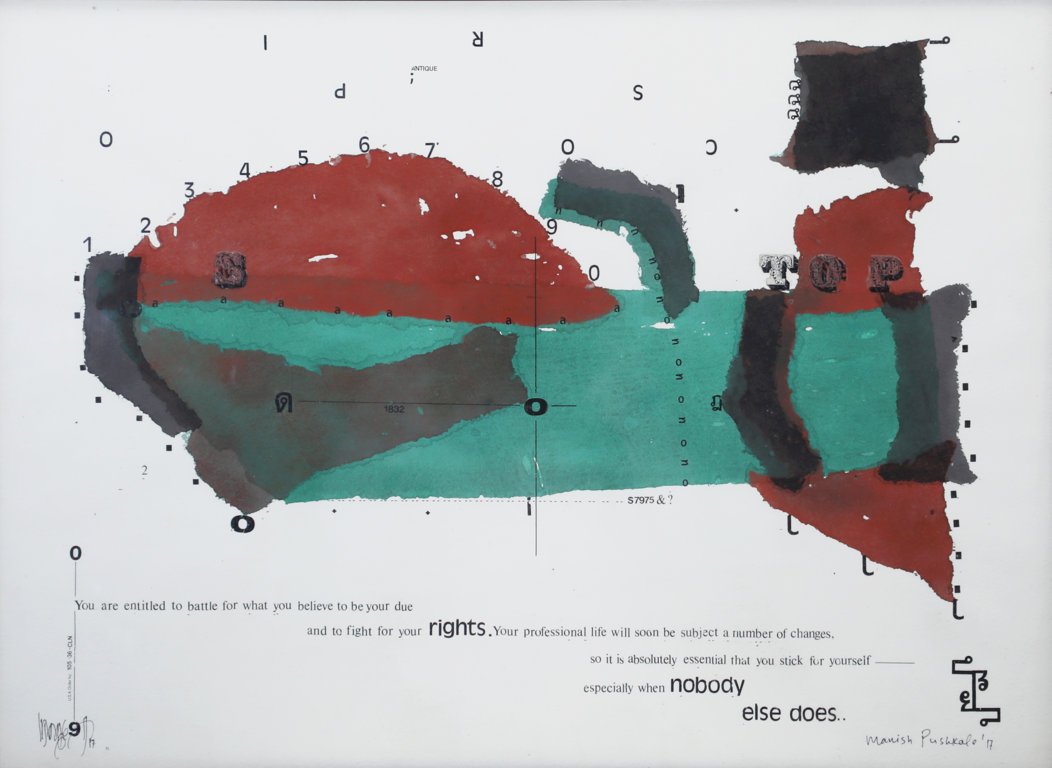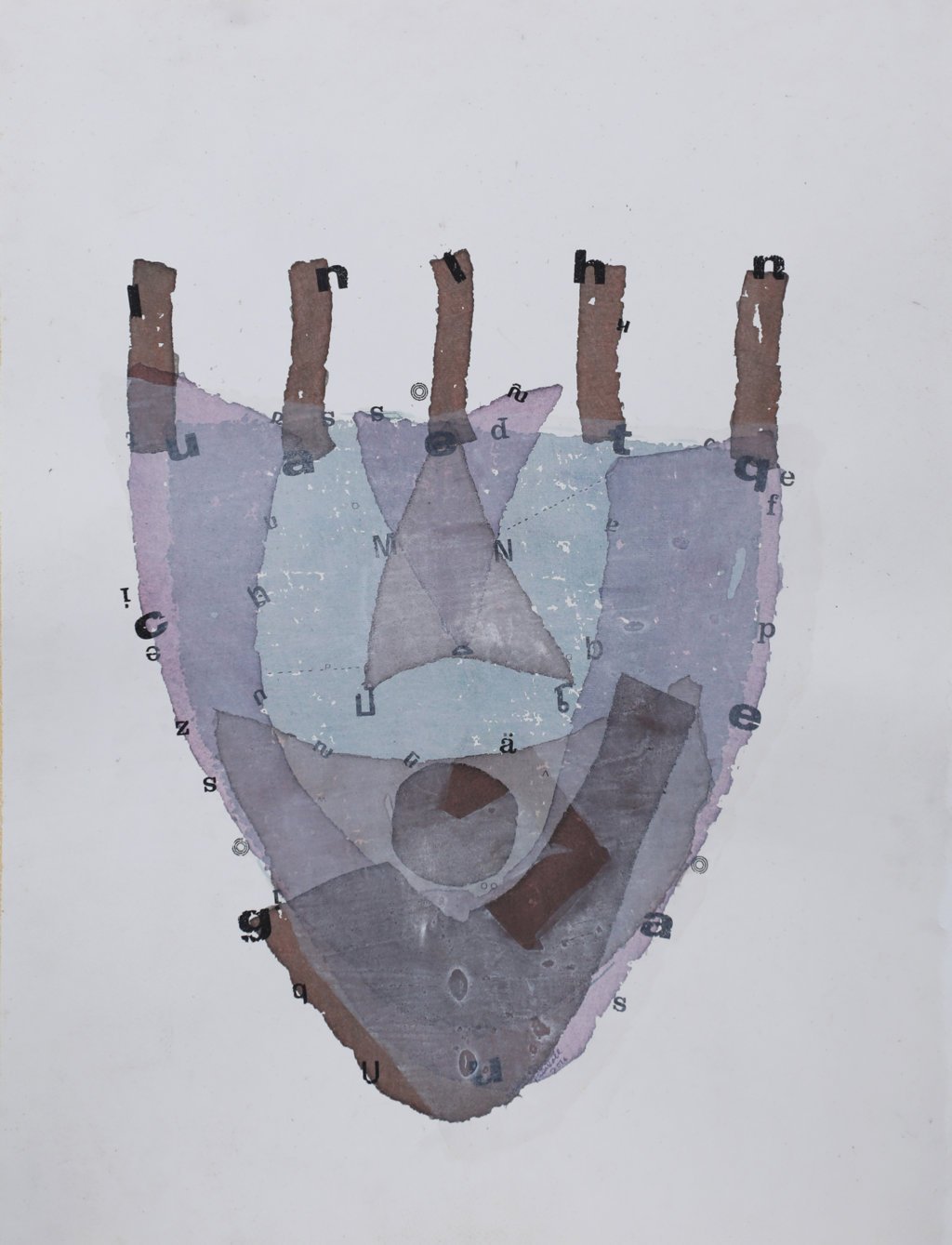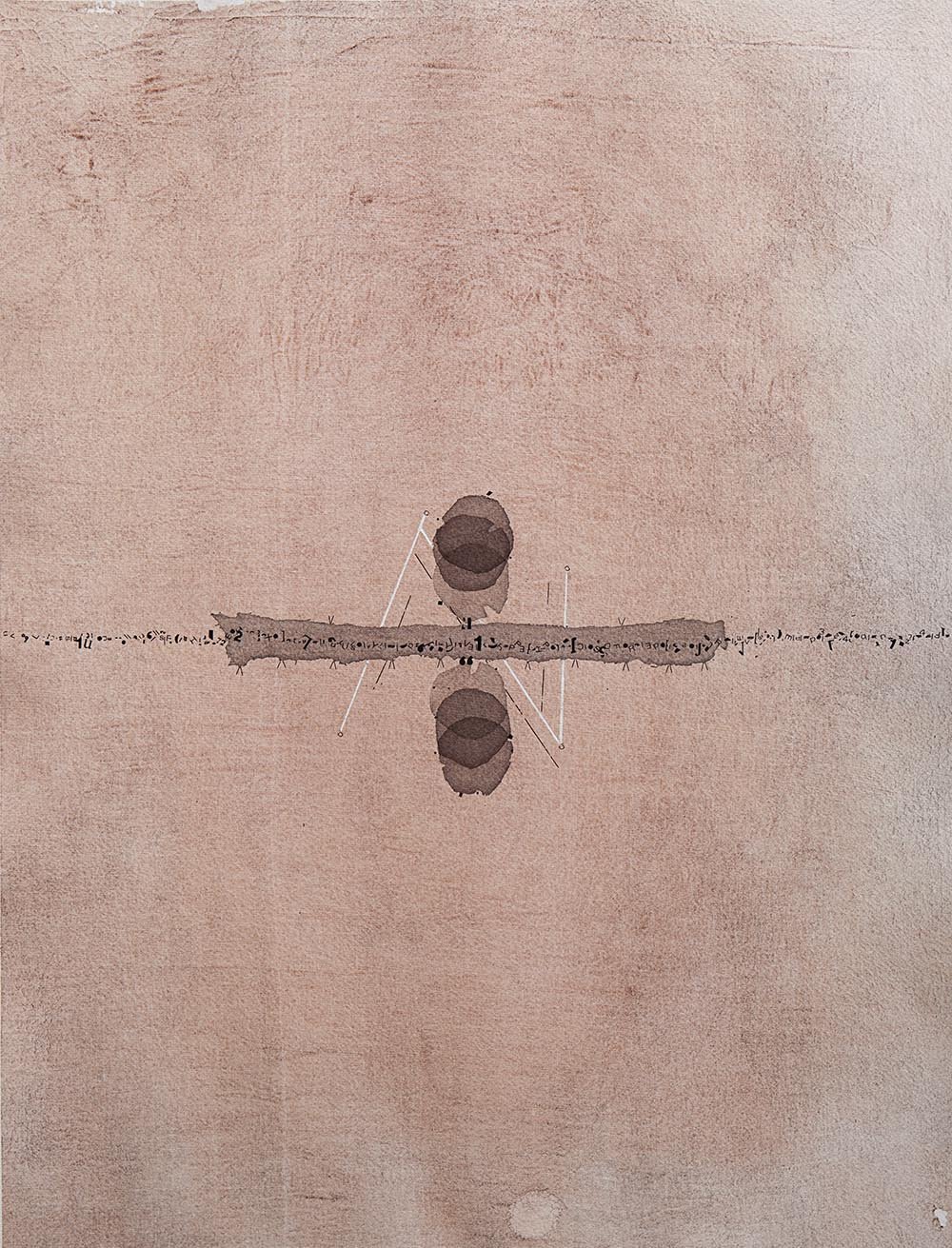
The Painter of Light by Manish Pushkale
TAP India - November, 2020
Manish Pushkale was born in 1973 in Bhopal. He holds a masters degree in Geology from MVM College, Bhopal. Without any formal training in art he evolved a language of abstraction that carries his own personal imprint, due to a powerful and sensitive initiation from the evocative environs of Bharat Bhavan, which is a multi arts complex in Bhopal. Pushkale’s early training as a geologist is echoed in the organic textuality of his works. The meticulous choice of colours used to layer his works and his method of applying and wiping off paint tangibly invokes complex meditations on asceticism-worldliness, renunciation-sensuality, presence-absence, death-rebirth and so on. While his works are play of formal dichotomies like those of light-shade, mark-erasure, form-formlessness, restraint-excess, control-indulgence, now have matured to a level that confronts and assimilates all these oppositions to achieve a state of refined harmony.
He has had 16 solo expositions with many prime galleries in India and abroad some of them at Bodhi Art, New Delhi and Mumbai, Gadfly Gallery, Perth and Aicon, and Palo Alto. He has participated in almost 700 group shows along with 5 two-man shows in India and abroad at Tao Art Gallery, Mumbai, Apparao Gallery, Chennai, Gallery Espace, New Delhi, National Gallery of Modern Art, Mumbai, Art Alive Gallery, New Delhi, Bodhi Art, Singapore to name a few. He is a member of Roop-adhyatm, an artist group established by noted painter S.H. Raza. He is a recipient of the AIFACS Award, Ministry of Culture’s Research Fellowship, Artist in Residency from Govt. of France (EGIDE-2004), Artist in Residency from Govt. of Italy, Artist in Residency from Reliance group in Mumbai, Kala-Kaustubh Samman and Spandan Chitrakala Samman. He is a Trustee of The Raza Foundation in Delhi and a former member of Garhi Studio Selection Committee (2008), Lalit Kala Academi, Ministry of Culture and also a member of the Executive Committee of M.P. Foundation in Delhi. He lives and works in Delhi.
Manish has attained substantially in a very short span of time; he has evolved a new kind of visual grammar. He is constantly harnessed to a sense of penance and meditation. A number of his painting series in which the characterization and sensitivity demonstrated towards pictorial interludes are completely varied have appeared. It is my opinion that he is now moving ahead from whatever he has done till now. I have been looking at all his recent work, everything he has done in the past few months, in the last year. He is moving ahead as if there is no end in sight. This is a search, an exploration that he himself has to be alive has to take forward. It is very possible that this search will take him to a white canvas. And once again something will emerge from that white canvas.
Some of Manish’s paintings are illuminated by certain brightness. The five elements are alive and energized in a unique way in his work. Absolutely. Sometimes they are not five, just two or three, with the others taking smaller, subsidiary forms. There are five elements – black, blue, red, yellow and white – and through their conjugation, as created by him, they appear in a distinct manner in his work. In his paintings, one will not find a pure red or blue or yellow: what appears is elevated form. The colours emerge in an extremely soft manifestation. A state of transcendent sublimation. What is present there should be seen. This is his way of seeing. He sees in a way that even the camera doesn’t. This is imagination, the vision of the soul. Let us see what forms and shapes of his creation will be discovered ahead.
S H Raza
Ashok Vajpeyi on Manish Pushkale
Each significant artist has a vision of life, art and reality. It need not be a vision which is predetermined; significance demands dynamic change, new transformations and accretions. An artist without a vision could be of no interest. But an artist with fixed vision could hardly be expected to produce significant art. Even at the risk of some simplification, one could say that Manish has a vision where art is a continuum of discovery; that the act of discovering in art is an interminable act. For instance, take the area of color. Manish is hardly ever satisfied with given colors. He is in constant search of colors. He hardly ever allows the colors of the tubes to exist in their original hues. He puts a layer of color and runs if off taking care that it does not disappear altogether, after layers of doing so, eventually we arrive at an unidentifiable and usual texture of color, indefinable by any conventional name. In a way he seems to be seeking color beyond colors; colors which are created by connections with other colors; by intermingling, submerging, inter- penetrating; by overlaying, as it were hiding behind other colors, as if he is trying to discover his own distinctive colors – not one, but many, to embody his pluralistic vision. In his paintings you could clearly see that they basically are constituted out of the remains of the wiped off layers of colors. The aesthetics of the work is integrated through the remains of the wiped off. Form, shapes, colors, textures are all being discovered, and hopefully the meaning too. There is perhaps the degree of humility in evidence here: the artist does not so much create as discovers, his creativity resides in discovery.




